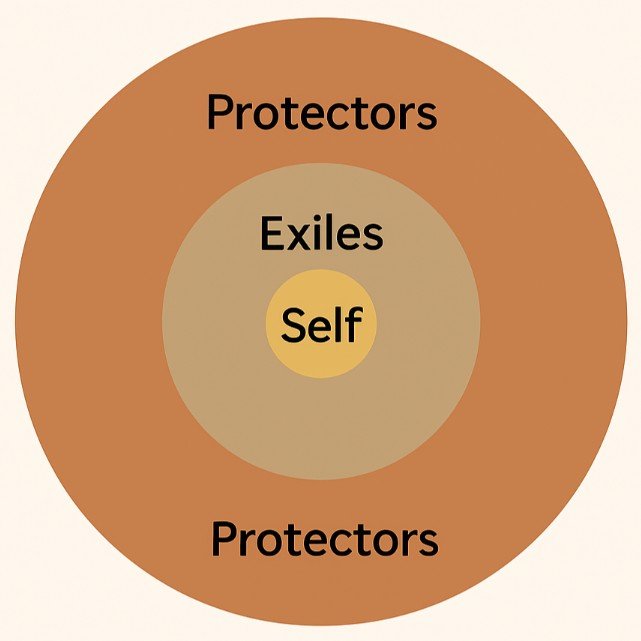Why We Lose Ourselves and How IFS Helps Us Return
In the last article, we explored how healing happens when protectors at the control panel trust the Authentic Self enough to let us witness and unburden the exiles they’ve been guarding. That is the path of recovery. But before we go further, it can be helpful to see the bigger picture: how and why we lose touch with the Authentic Self in the first place.
Sometimes words alone aren’t enough. So let’s look at a simple illustration.
True Self
We all begin life as what I call the True Self - whole, open, playful, creative, and naturally connected to others.
This is our natural state. Nothing is missing.
The Birth of the Shame Identity
But as we grow, painful experiences leave their mark. We may hear harsh words, feel rejected, or have our needs dismissed. Slowly, these experiences form what I call the Shame Identity - the collection of painful beliefs about ourselves that say we are not enough, not safe, or not lovable.
The True Self is still present, but it is hidden under layers of shame-based beliefs.
The Rise of the False Identity
To protect us from feeling the pain of the Shame Identity, we construct a False Identity - the mask we show to the world to protect ourselves.
Over time, we forget that we created the False Identity and begin to believe it is who we are. We convince those in our lives that who we try to be is who we actually are. People around us expect us to be who we have pretended to be and we get locked into our performance. But the False Identity is only a set of survival strategies. Beneath it, the True Self is still present, buried under the weight of shame and protection.
How IFS Aligns with This Illustration
In the IFS model, what I am calling True Self is referred to as Self
At the core of everyone is the Self - calm, compassionate, connected, and whole. Who we really are is never damaged, never destroyed, always present.
What I call the Shame Identity is the hiding place for what IFS calls exiles - the parts of us that hold the pain and shame of the unresolved past. These are the younger, wounded parts of us that carry the pain of rejection and the burdens of shame-based beliefs.
What I call the False Identity is the realm of parts that IFS refers to as protectors who manage, guard, distract, or control us in order to keep the exiles hidden and to prevent us from feeling their pain.
The Self is always there at the center. While our sense of Self may have been lost, it has always been there and is recoverable.
Understanding ourselves in this way helps us recognize that losing our sense of Self is not a flaw or a failure. It is simply the way our system adapts to the unhealed pain of unresolved trauma. The Shame Identity forms when, in an effort to survive unmet needs or indigestible pain, we exile parts of ourselves that feel too vulnerable to be exposed to overwhelming pain. The Shame Identity is formed, based on an assumption that there is something about us that deserved to be abandoned, rejected, humiliated, blamed, or otherwise hurt, neglected or abused.
The False Identity forms to help us continue to function, despite the threat of further injury. And beneath the busy-ness that a painful unresolved past creates, the authentic Self gets buried but never disappears.
The IFS model helps us reverse the process:
First, by pausing to notice the False Identity at work.
Then, by turning toward the protectors with compassion and appreciation for their intention to help. This restores connection and trust between the authentic Self and protectors.
Next, by witnessing the pain of exiles, helping them let go of all they’ve been holding, and demonstrating that the authentic Self is fully resourced and available to tend to their unmet needs for attunement and love.
Gaining access to the qualities and resources of Self is a process that begins with the recognition that we all have parts that are trying to help us survive. When you pause and bring attuned attention to your activated parts, they relax because they no longer feel alone and because they begin to feel understood and appreciated. And when they do so, the qualities and resources of Self naturally emerge.






